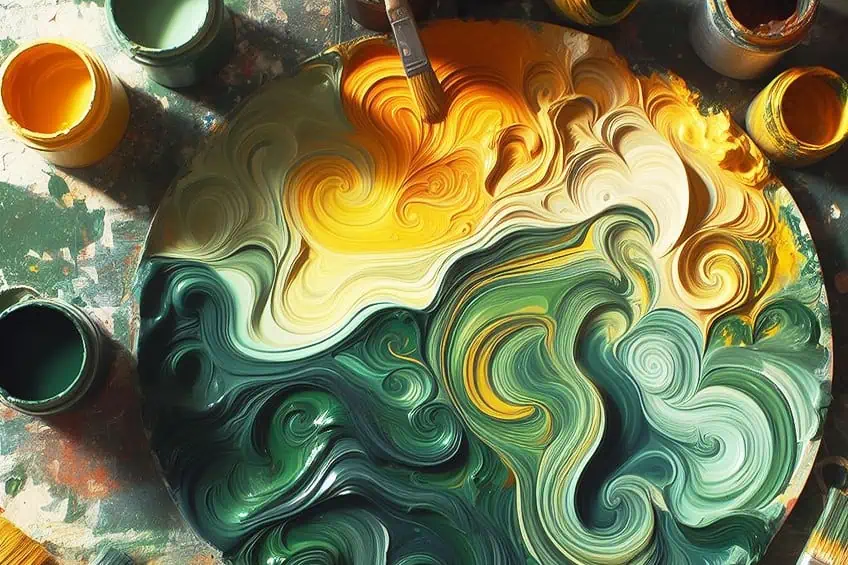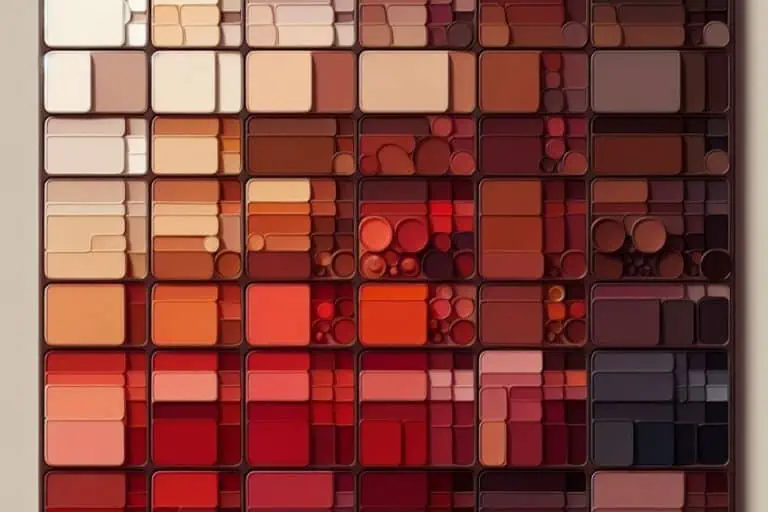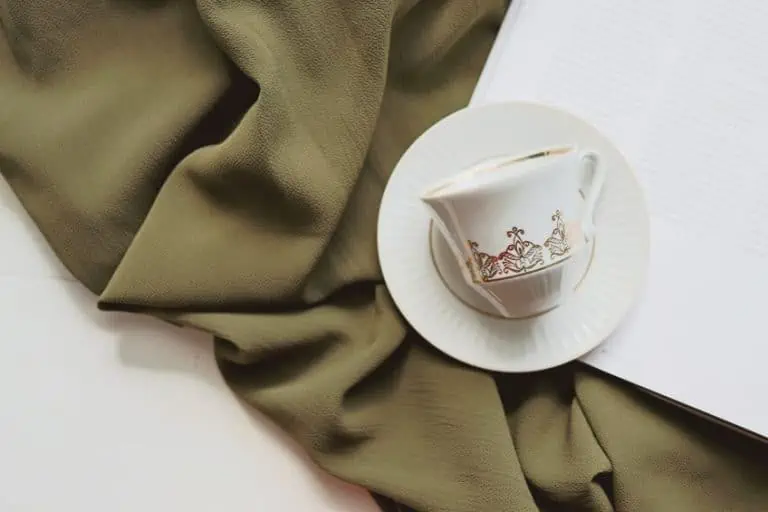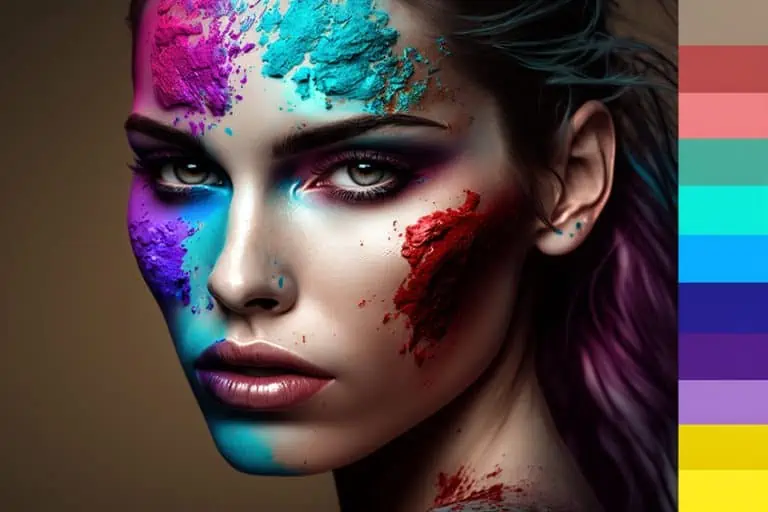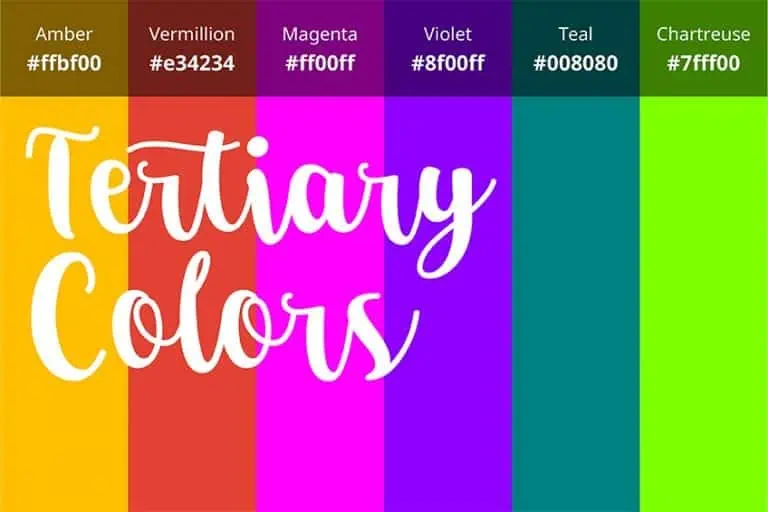What Does Green and Yellow Make? – The Chartreuse Charm
This post may contain affiliate links. We may earn a small commission from purchases made through them, at no additional cost to you.
Mixing primary colors is the basic technique behind color theory, while mixing tertiary colors allows you to create interesting and complex color palettes. Green and yellow are versatile and rich colors when used alone but combining them opens up a whole new world of hues that are perfect to use in your art and home. Join us below in exploring the different colors you can create, how you can mix them for yourself, and their possible uses in your art and surroundings.
Table of Contents
What Does Green and Yellow Make?
Combining yellow and green will result in lime green or chartreuse. This is because there is already some yellow in green, so adding even more yellow produces a yellow with a green undertone.
This color lies around halfway between a cool yellow and a warm green on the color model. You can also mix various shades, tints, and tones of this color by adding neutrals, however, they will always be some variation of this yellow-green.

Adding black will produce a leaf green color, while adding white will make a pear color. Using gray will desaturate the color and make it appear more lime.
| Color Name | Color Hex Code | RGB Color Code | CMYK Color Code (%) | Color Hue |
| Yellow-Green | #80E400 | 129, 228, 0 | 43, 0, 100, 11 | |
| Leaf Green | #559800 | 86, 152, 0 | 43, 0, 100, 40 | |
| Pear | #7FC22A | 128, 194, 42 | 34, 0, 78, 24 | |
| Lime | #AAED55 | 171, 237, 85 | 28, 0, 64, 7 |
Different Combinations of Green and Yellow
The different varieties of yellow and greens can also be mixed to create a yellow-green mixture with different color temperatures. Understanding the color temperature of the colors you are using as mixing colors of opposite temperatures will muddy the resulting color.
Using this knowledge, you can warm up the final yellow-green color and make it brighter by combining a warm yellow with a warm green to create an acid green.
You can also cool it down and darken it, because of the added blue in the mixture, by combining a cool yellow and cool green to create an apple green color. Try experimenting by mixing greens and yellows with the same color bias to get the exact color that you want.

| Color Name | Color Hex Code | RGB Color Code | CMYK Color Code (%) | Color Hue |
| Acid Green | #C1CF00 | 193, 207, 0 | 7, 0, 100, 19 | |
| Apple Green | #6FE422 | 112, 228, 34 | 51, 0, 85, 11 |
Understanding Green and Yellow
Green and yellow are abundant in the natural world surrounding us and are steeped in symbolism and meaning. Green is often associated with nature and so evokes feelings of calmness, hope, and revitalization. Yellow on the other hand reminds us of sunny days and energizes us with feelings of happiness, warmth, and optimism.
When you mix green and yellow in different ways, you can make an array of colors including chartreuse, pear, and lime. In order to create these colors though, it can be useful to understand some of the color theory behind them. When mixing colors from any medium, artists generally make use of one the three color-models, namely the RGB color model, CMYK color model, or RYB color model.
These models help you to visualize the different colors, how they can be combined, and the relationships between them.

| Color Name | Color Hex Code | RGB Color Code | CMYK Color Code (%) | Color Hue |
| Green | #00C800 | 0, 200, 0 | 100, 0, 100, 22 | |
| Yellow | #FFFF00 | 255, 255, 0 | 0, 0, 100, 0 |
The CMYK Color Model
The CMYK Color Model is most frequently used when mixing different colors of ink and is often found in printers. In this color model, yellow is actually one of the primary colors as well as cyan and magenta. Green is now a secondary color made by combining yellow and cyan, which is a very bright blue. When you mix green and yellow in this model, you will produce a chartreuse green, while mixing all the primary colors together will produce black.
The RGB Color Model
Mixing light and mixing inks will produce very different colors as one mixing method is subtractive while the other is additive, which is why they use two different color models. When mixing different colors of light, artists use the additive RGB model. As the name suggests, green is a primary color along with red and blue and all these colors mix together to produce white.
Yellow is a secondary color within this model and is created by combining green with red. You might be wondering “do yellow and green make blue” since the color models feel opposite to each other.
In actuality, mixing green and yellow lights produces the tertiary color chartreuse green, which is also a bright greenish yellow, however, it will be slightly lighter than the one produced when mixing inks.
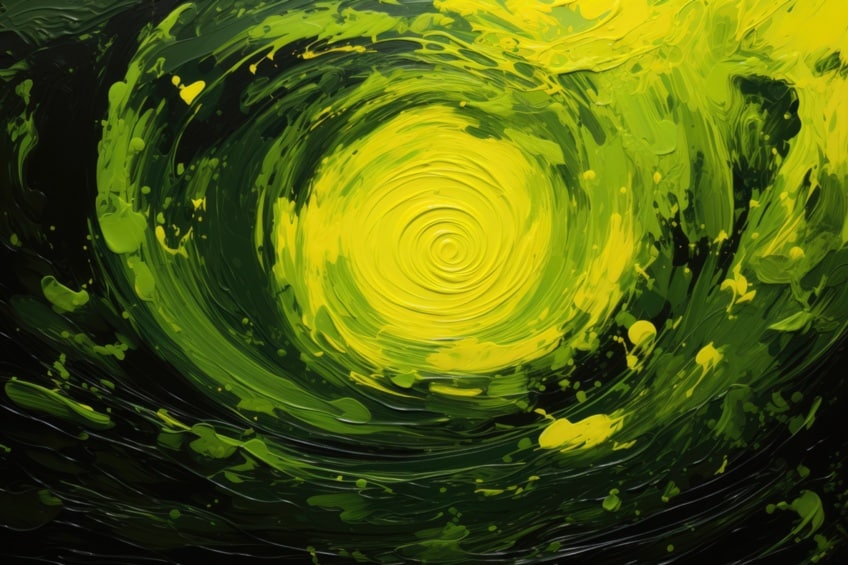
The RYB Color Model
The RYB color model tends to be the one most artists are familiar with as it is the model that is used to mix different colored paints. This model also has yellow as one of its primary colors alongside red and blue. Green is once again a secondary color, however, this time it is made by mixing yellow and blue.
Combining yellow and green produces the tertiary color yellow-green, which is very similar to the chartreuse created in the other color models.

Green and yellow lie very close together on all the color wheels, making them analogous colors. This means that they are often used together in art and design as they create a bright color palette with soft contrast. For the rest of this article, we will be referencing the RYB color model when talking about mixing green and yellow.
Different Types of Green and Yellow
In addition to the two basic hues of green and yellow, you can also mix a variety of other colors depending on the ratio and color temperature of the colors used, and all these aspects will impact the final look of your color mixture. There are warm and cool varieties as well as different tones, tints, and shades of both yellow and green.
Yellow is a warm color, while green is a cool one, however, color temperature is relative, and both yellows and greens can appear cooler or warmer depending on the proportions of the colors used in them.
Because yellow and green lie so close together on the color wheel the different variations are very similar and only have subtle differences in color.
Warm and Cool Yellows
While yellow is already a warm color, it can still be made relatively cooler or warmer. Because it is a primary color, this is done by adding small amounts of the colors that are adjacent to it in the color model, which are orange and green. Orange is added to create a warmer yellow while green is added to make a cooler yellow.

| Color Name | Color Hex Code | RGB Color Code | CMYK Color Code (%) | Color Hue |
| Warm Yellow | #FFD500 | 255, 213, 0 | 0, 16, 100, 0 | |
| Cool Yellow | #DDFF00 | 212, 255, 0 | 17, 0, 100, 0 |
Warm and Cool Greens
As we have already mentioned, green is made by combining blue with yellow. You can easily change the color temperature of green by adding more yellow, which is a warm color, to make it warmer or adding more blue, which is a cool color, to make it cooler.
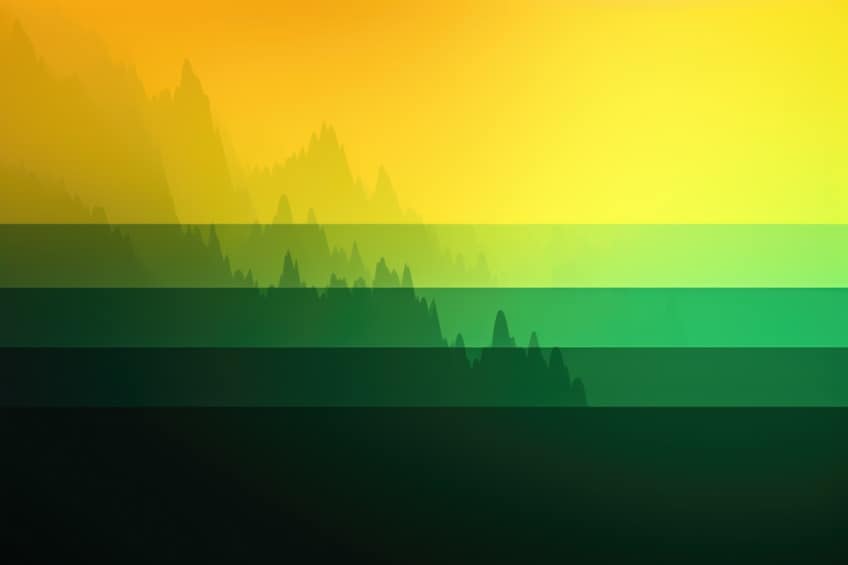
| Color Name | Color Hex Code | RGB Color Code | CMYK Color Code (%) | Color Hue |
| Warm Green | #82C800 | 130, 200, 0 | 35, 0, 100, 22 | |
| Cool Green | #00C843 | 0, 200, 67 | 100, 0, 67, 22 |
Tones, Tints, and Shades of Green and Yellow
Along with the different color temperatures, neutrals can also be added to yellow and green to produce shades, tints, and tones of these colors. These neutrals are black, white, and gray and they change the values of colors when mixed with them. Adding black to yellow and green will produce shades such as a dark mustard or deep green. These colors are darker and produce a more dramatic effect. Adding white to yellow and green will produce tints and colors like pastel yellow or baby green. These colors are lighter and softer than their base hues. Finally, adding gray to yellow and green will create tones of these colors such as olive yellow and phthalo green, which are less saturated.
When mixing green and yellow together, you should try not to use these tones, tints, and shades, as they can produce unforeseen effects on your final color.
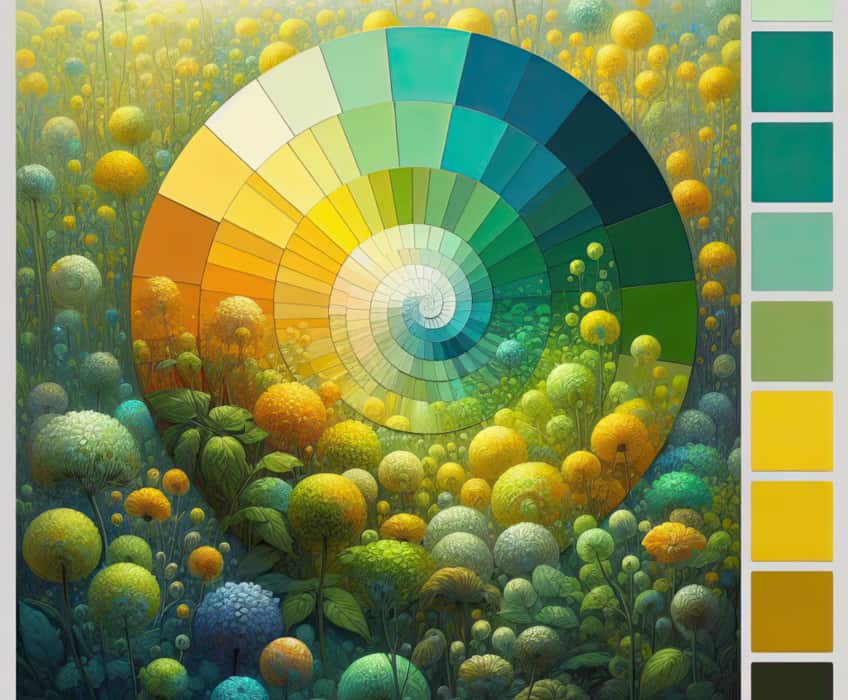
| Color Name | Color Hex Code | RGB Color Code | CMYK Color Code (%) | Color Hue |
| Dark Mustard | #808000 | 128, 128, 0 | 0, 0, 100, 50 | |
| Pastel Yellow | #FFFF80 | 255, 255, 128 | 0, 0, 50, 0 | |
| Olive Yellow | #D4D42A | 212, 212, 42 | 0, 0, 80, 17 | |
| Deep Green | #006400 | 0, 100, 0 | 100, 0, 100, 61 | |
| Baby Green | #80E480 | 128, 228, 128 | 44, 0, 44, 11 | |
| Phthalo Green | #3FA33F | 63, 163, 63 | 61, 0, 61, 36 |
Uses of Green and Yellow Mixtures
You can create a wide variety of yellow-greens when you mix yellow and green together. Although they can seem very bright and overwhelming, these colors have many uses in art and are particularly great for natural landscapes or adding highlights. These colors are also perfect for adding contrast or a pop of color in your home.
Uses in Art
The different yellow-greens are great to use when creating natural highlights on different vegetation such as grasses or leaves. This is because the mixture of yellow and green mimics the effect of warm sunshine on green foliage. If used alongside other yellows and greens, this color is also great to use in the middle ground of your piece as it draws the viewer’s eye, which makes colors that are cooler and darker feel further away, increasing the feeling depth in your art.
Uses in Interior Design
As mentioned above, yellow and green lie next to each other on the color wheel. Therefore, these colors are often used in analogous color schemes to create a balanced color palette with soft contrast. The yellow-green mixture, however, can be very bright and overpowering, which makes many shy away from using this color.
The color was very popular in the 1960s and was often used to add a bright pop of color. This color also pairs well with deeper red-violets and pastel pinks for an impactful color palette.

Pairing chartreuse with more red tones will make the color feel cooler and lighter, while using it with more purple tones to give it a slightly darker and bolder appearance. This color can also be used alongside neutral colors or other greens and yellows for a softer and more balanced color palette.
Psychology of Green and Yellow Mixtures
Yellow-green or chartreuse is an intense color that can have an impact on your mood and feelings. The mixture of calm and revitalization from green and the warmth and brightness from yellow give this color many positive effects. This lively color produces feelings of freshness, cheerfulness, and a calm joy that energizes, inspires and can feel very welcoming.
However, this fun color can also have negative effects reminding you of sickness, jealousy, or danger.

We hope you can see how combining different yellows and greens can produce a large variety of yellow-greens. These colors, along with their tints, tones, and shades, are perfect for creating realistic highlights in your landscape paintings or brightening up a room. Yellow-green mixtures also have many meanings and symbolisms, which can be used to your advantage in your home and art to create something that is joyful and inspiring.
Frequently Asked Questions
What Does Green and Yellow Make?
Mixing green and yellow will produce a yellow-green or chartreuse color depending on the exact colors used in the mixture. Combining a warm yellow and green will create a warmer color like acid green, while combining a cool yellow and green will create a cooler color closer to apple green.
Do Yellow and Green Make Blue?
Mixing yellow and green together will not make blue. You can, however, create a greenish teal color by adding a very cool yellow, such as a lime, with a very cool green, like Castleton green.
Megan is a writer and researcher who graduated from the University of Cape Town with a degree in Social Sciences, specializing in Psychology and Environmental Science. Her passion for knowledge and leaving a positive impact has fueled her current work in conscious and sustainable growth in Southern Africa. Megan’s love of nature has also led her to train as an animal behaviorist. She works part-time training and rehabilitating dogs. Megan is interested in the physical and psychological effects of colors in our environment on our mood and well-being. In addition, she is concerned with how art and creativity have been an integral part of human society. Megan van Schoor has been writing blog posts on the topics of painting, drawing, and color theory for acrylgiessen since 2021.
Learn more about Megan van Schoor and about us.
